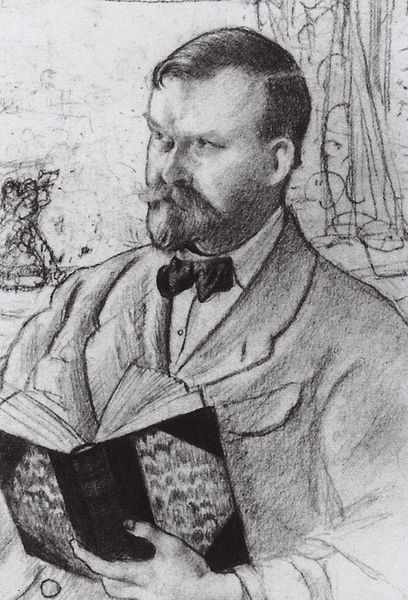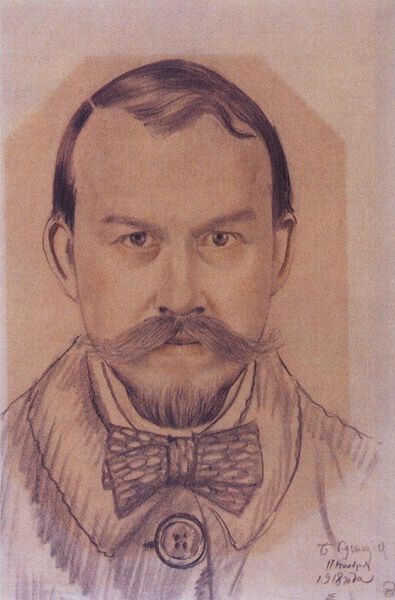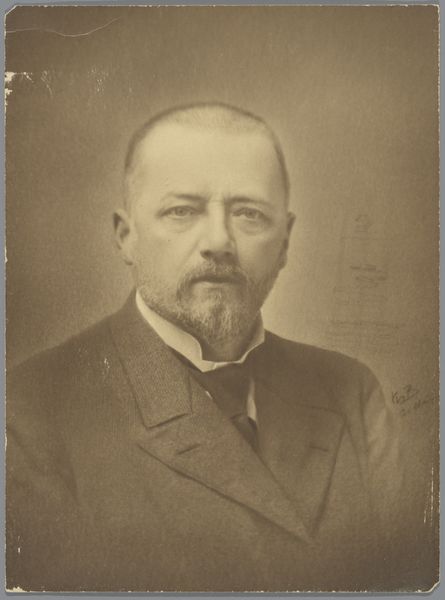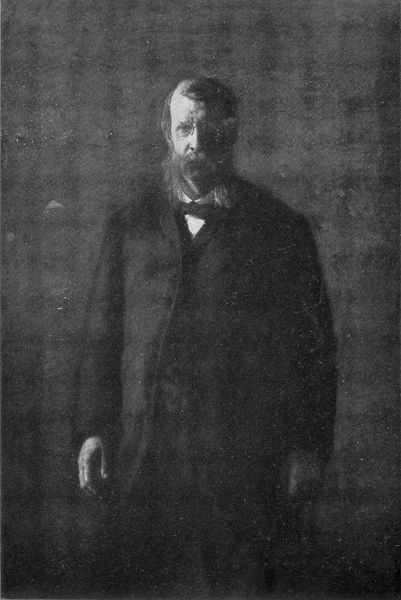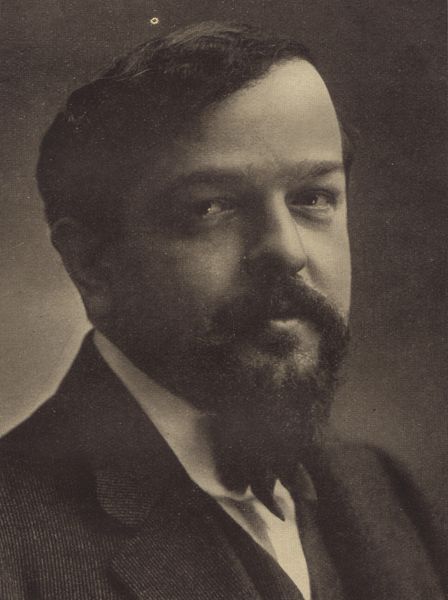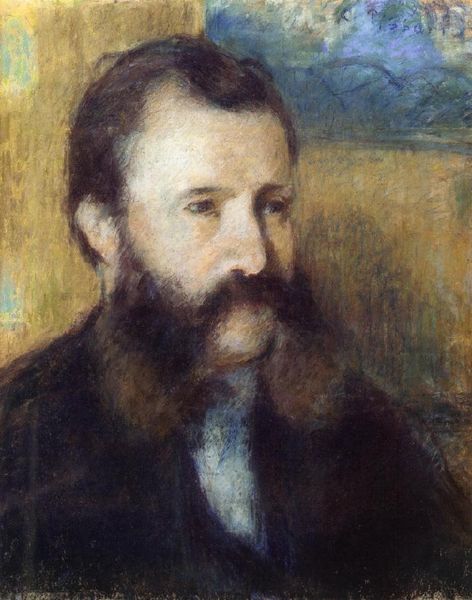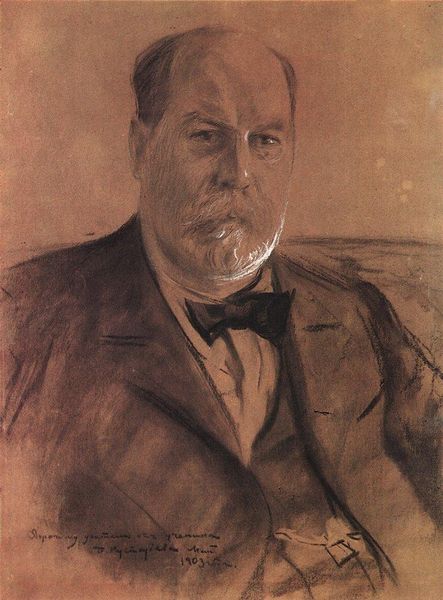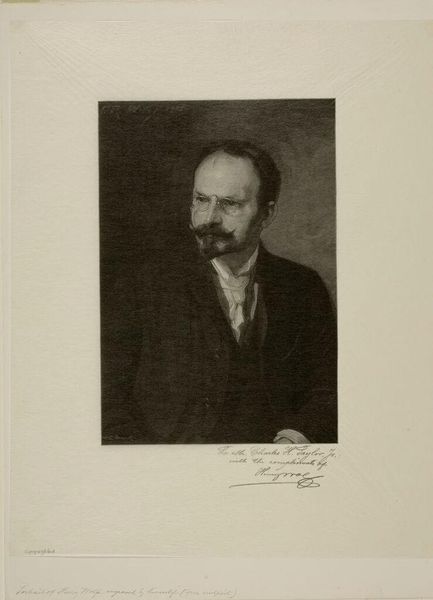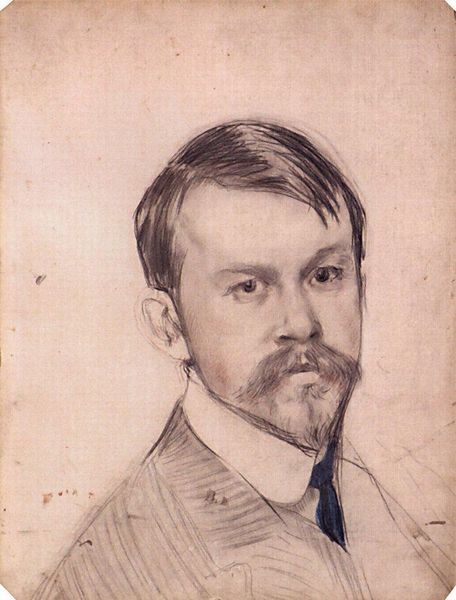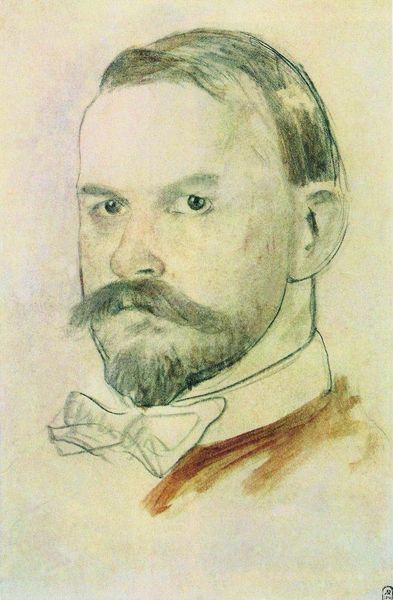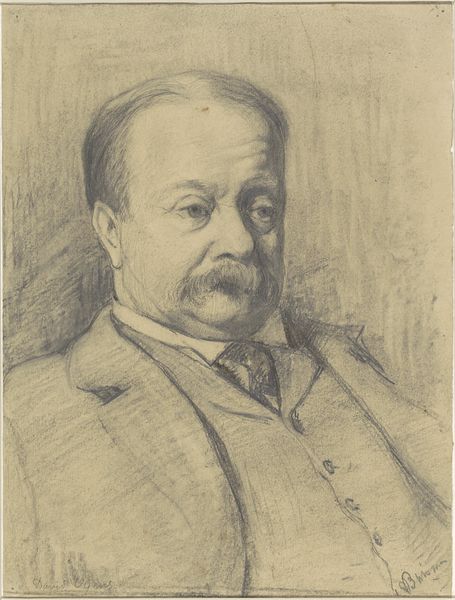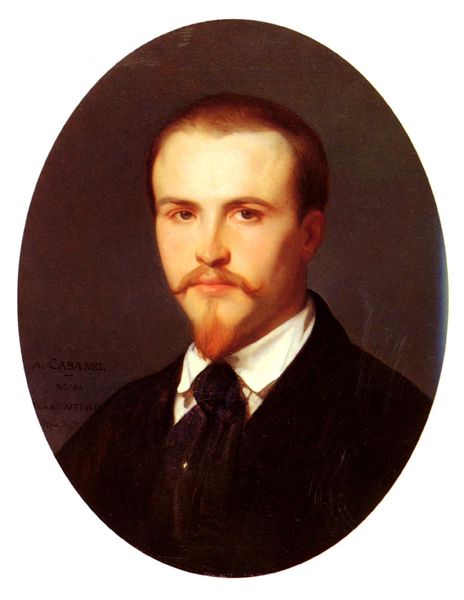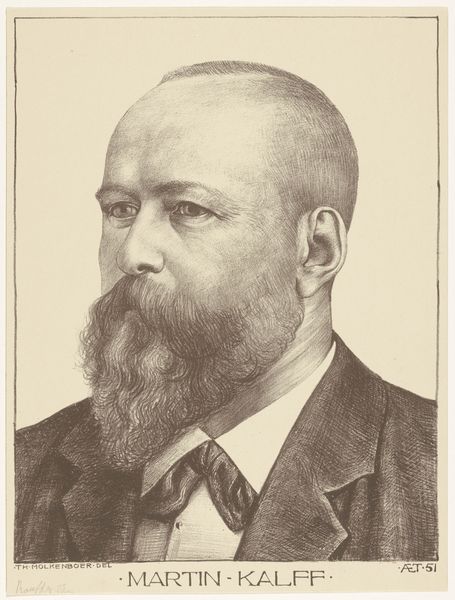
drawing, pencil
#
portrait
#
drawing
#
portrait
#
pencil
#
portrait drawing
#
academic-art
#
realism
Copyright: Public domain
Curator: Let’s turn our attention to Paul Leroy's pencil drawing, "Portrait d'Eugène Le Mouël," created in 1896. Editor: My first impression is…sturdy. A very grounded and determined face emerges from what seems to be a flurry of pencil strokes. Curator: The material itself speaks to that. Pencil, in its very production, involves graphite mined and refined, then encased in wood—resources extracted and transformed through labor to make an affordable tool for artistic expression, especially portraiture during that time. Editor: It's fascinating to consider how that material shapes our perception. The inherent sketchiness somehow allows for a rawness, an honesty that a more polished medium might conceal. The way the pencil is applied creates a soft, almost smoky quality that contrasts nicely with his sharp, unwavering gaze. Curator: Absolutely. Leroy, operating within academic traditions, clearly highlights the socio-economic accessibility of drawing as a medium, making portraiture available to a broader segment of the population. This democratizing effect can be juxtaposed with the rise of photography at the same period. Editor: And looking at the sitter, there is something intensely human about his expression. It's as though the artist caught him in a moment of deep thought, or maybe even slight annoyance, just before he adopted a more formal pose. I almost want to know what he was thinking at that moment. Curator: That’s an interesting point to highlight, the intimacy imbued in the subject as well as in the artistic method that may speak of a larger context during France in 1896. Editor: I’m particularly drawn to the contrast between the highly detailed face and the almost unfinished quality of the background and clothing, perhaps speaking to the necessity of focusing energy where needed most to accurately convey the sense of the person behind the features. Curator: It’s as though Leroy emphasizes the individual and the medium simultaneously, almost negating the hierarchical expectation that existed between fine art and minor forms. Editor: Thinking about the social context of the drawing and how affordable it made portraiture at the time allows me to appreciate the power of pencil even more. I see him in the round somehow, ready to launch into an extended oration... Curator: Agreed, there are very clear markers here. The subject’s presentation offers interesting material reflections about artistic representation itself and its shifting social place, as does Leroy's thoughtful treatment of form and subject.
Comments
No comments
Be the first to comment and join the conversation on the ultimate creative platform.
